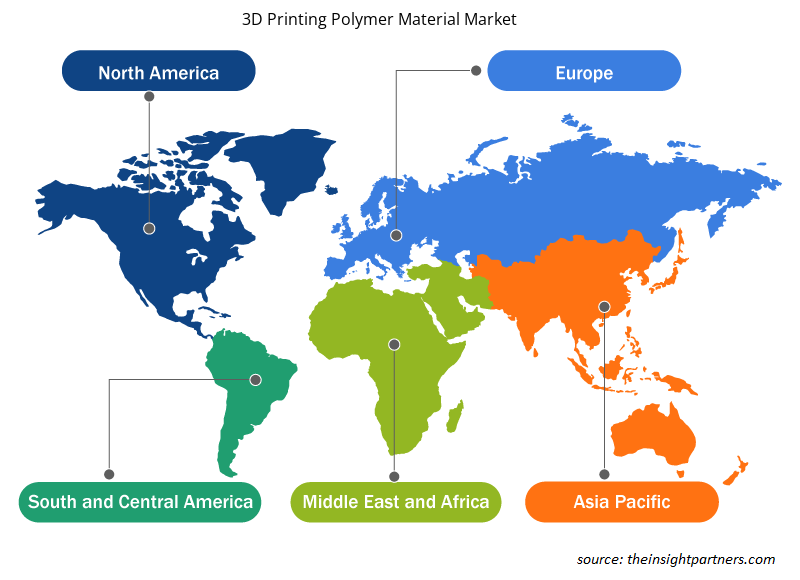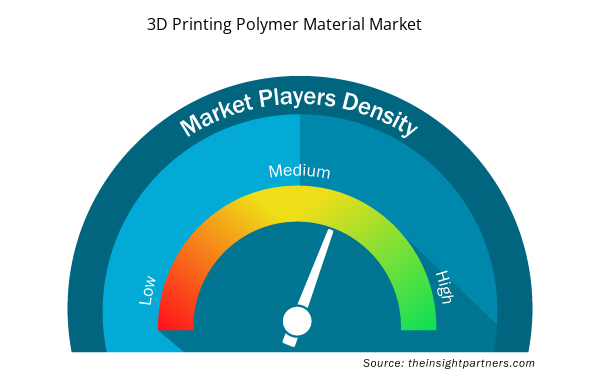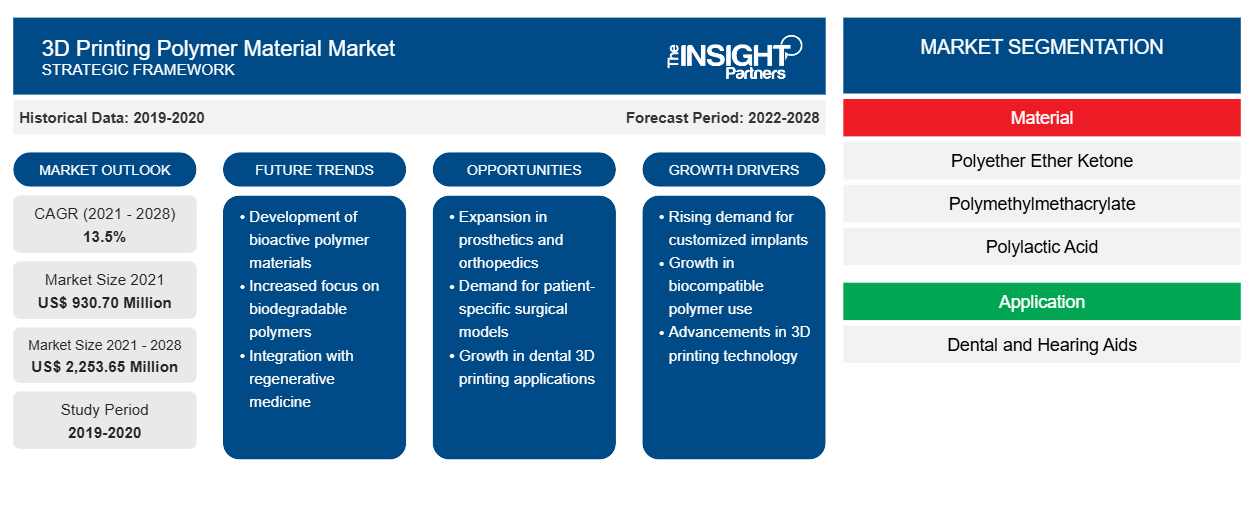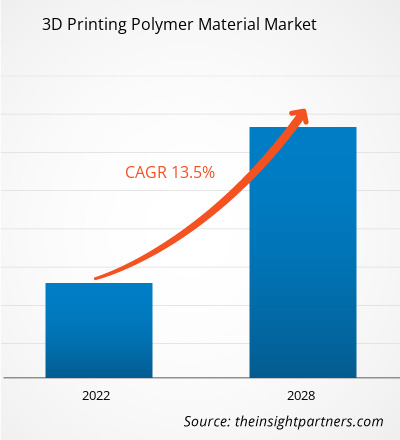2021 年,医疗应用的 3D 打印聚合物材料市场价值为 9.307 亿美元,预计到 2028 年将达到 22.5365 亿美元;预计 2021 年至 2028 年的复合年增长率为 13.5%。
聚合物是主要的 3D 打印材料之一。聚合物 3D 打印是一种新兴技术,在工业领域,特别是在医疗领域有更广泛的应用。3D 打印聚合物材料由聚醚醚酮、聚甲基丙烯酸甲酯和聚乳酸组成。3D 打印聚合物材料市场增长的主要驱动力之一是 3D 打印在牙科各种应用中的使用越来越多。在牙科领域,3D 打印的使用迅速增加。牙医广泛使用 3D 打印技术来更换或修复受损的牙齿、创建牙齿矫正模型以及制作牙冠、牙套和假牙。2020年,北美在全球医疗用 3D 打印聚合物材料市场
中占据最大收入份额。由于北美快速的城市化和工业化,老龄化人口不断增加和噪音暴露不断增加,导致聋哑人口增加。这促进了对助听器设备的需求,进而有利于北美医疗应用 3D 打印聚合物材料市场的增长。根据收入和计划参与调查 (SIPP),美国有超过 60 万人是聋人,全国约有 2800 万人口患有部分耳聋。因此,该地区对助听器设备的需求很大,并为 3D 聚合物材料制造商扩大其在北美的市场份额提供了有利可图的机会。
定制此报告以满足您的需求
您可以免费定制任何报告,包括本报告的部分内容、国家级分析、Excel 数据包,以及为初创企业和大学提供优惠和折扣
- 获取此报告的关键市场趋势。这个免费样品将包括数据分析,从市场趋势到估计和预测。
COVID-19 疫情对医疗应用 3D 打印聚合物材料市场的影响
在 COVID-19 疫情爆发之前,由于 3D 打印中对聚合物的需求很高,用于制造不同的医疗设备、仪器、定制植入物和医疗模型,医疗应用的 3D 打印聚合物材料市场正在增长。然而,在 2020 年,由于国家和国际边界的关闭导致价值链中断,各行各业不得不放慢运营速度。由于封锁、旅行禁令和企业停业,COVID-19 疫情对各国的经济和行业产生了不利影响。由于对这些产品的需求低,牙科植入物、牙科假体、植入物配件、助听器等应用对 3D 打印聚合物材料的需求有所减少。然而,在 COVID-19 疫情期间,用于生产不同的个人防护设备和医疗设备对 3D 打印聚合物的需求有所增加。
聚合物 3D 打印已成为一种可行的技术,可在疫情期间生产呼吸机阀、护目镜、防护面罩和测试拭子。
市场洞察
3D 打印在牙科领域的应用日益广泛
在牙科领域,3D 打印的使用迅速增加。与减材/铣削技术相比,3D 打印具有多种优势。它可以轻松生产复杂的几何形状,并减少材料浪费,而铣削通常会浪费材料。3D 打印允许一次打印多个器具。3D 打印的准确性也得到了提高。3D打印技术在牙科领域的应用范围很广。
口腔疾病是全球不同国家的主要健康负担,影响人们的一生。根据 2017 年全球疾病负担,未治疗的恒牙龋齿是最常见的健康状况。随着城市化进程的加快和生活条件的变化,口腔疾病的患病率持续上升。使用 3D 打印技术制造的各种牙科产品在牙齿结构的修复中得到广泛应用。因此,龋齿和其他牙科疾病的高发病率导致 3D 打印产品在牙科领域的使用越来越多。
应用程序洞察
根据应用,全球医疗用 3D 打印聚合物材料市场细分为牙科和助听器。2020 年,牙科领域在医疗用 3D 打印聚合物材料市场中占有较大份额。医疗用 3D 打印聚合物材料市场的增长可归因于聚合物材料在设计支架结构方面的广泛应用,因为与金属和陶瓷相比,聚合物材料具有更好的生物和机械性能、易于加工、生产成本低和重量轻等特性。
Evonik Industries AG、STRATASYS LTD、Formlabs、Henkel AG & COMPANY, KGAA、Arkema、BASF SE、Roboze、Bionic Production GmbH、Orion Additive Manufacturing GmbH 和 Solvay SA 是全球医疗用 3D 打印聚合物材料市场的参与者之一。市场参与者专注于提供高质量的产品以满足客户需求。
3D 打印聚合物材料市场区域洞察
Insight Partners 的分析师已详细解释了预测期内影响 3D 打印聚合物材料市场的区域趋势和因素。本节还讨论了北美、欧洲、亚太地区、中东和非洲以及南美和中美洲的 3D 打印聚合物材料市场细分和地理位置。

- 获取 3D 打印聚合物材料市场的区域特定数据
3D 打印聚合物材料市场报告范围
| 报告属性 | 细节 |
|---|---|
| 2021 年市场规模 | 9.307亿美元 |
| 2028 年市场规模 | 22.5365 亿美元 |
| 全球复合年增长率(2021 - 2028) | 13.5% |
| 史料 | 2019-2020 |
| 预测期 | 2022-2028 |
| 涵盖的领域 | 按材质
|
| 覆盖地区和国家 | 北美
|
| 市场领导者和主要公司简介 |
|
3D 打印聚合物材料市场参与者密度:了解其对业务动态的影响
3D 打印聚合物材料市场正在快速增长,这得益于终端用户需求的不断增长,而这些需求又源于消费者偏好的不断变化、技术进步以及对产品优势的认识不断提高等因素。随着需求的增加,企业正在扩大其产品范围,进行创新以满足消费者的需求,并利用新兴趋势,从而进一步推动市场增长。
市场参与者密度是指在特定市场或行业内运营的企业或公司的分布情况。它表明在给定市场空间中,相对于其规模或总市场价值,有多少竞争对手(市场参与者)存在。
在 3D 打印聚合物材料市场运营的主要公司有:
- 赢创工业集团
- Stratasys 有限公司
- 表格实验室
- 汉高股份公司
- 阿科玛
免责声明:上面列出的公司没有按照任何特定顺序排列。

- 获取 3D 打印聚合物材料市场顶级关键参与者概览
报告亮点
- 医疗应用 3D 打印聚合物材料市场的渐进式行业趋势,帮助参与者制定有效的长期战略
- 发达市场和发展中市场采用的业务增长战略
- 2019 年至 2028 年医疗应用 3D 打印聚合物材料市场定量分析
- 全球3D打印聚合物材料需求量预测
- 波特五力分析说明了行业内买家和供应商的效力
- 了解竞争市场状况的最新发展
- 医疗应用 3D 打印聚合物材料市场的发展趋势和前景以及推动和制约其增长的因素
- 通过强调支撑商业利益的市场策略来协助决策过程,从而促进市场增长
- 医疗应用3D打印聚合物材料市场规模各节点规模
- 市场详细概述和细分,以及 3D 打印聚合物材料行业动态
- 各地区医疗用3D打印聚合物材料市场规模及增长潜力巨大
医疗应用的 3D 打印聚合物材料市场
材料
- 聚醚醚酮
- 聚甲基丙烯酸甲酯
- 聚乳酸
- 其他的
应用
- 牙科
- 牙科植入物
- 牙科修复
- 植入物配件
- 其他的
- 助听器
公司简介
- 赢创工业集团
- Stratasys 有限公司
- 表格实验室
- 汉高股份公司
- 阿科玛
- 巴斯夫
- 罗博泽
- 仿生生产有限公司
- Orion Additive Manufacturing GmbH
- 索尔维公司
- 历史分析(2 年)、基准年、预测(7 年)及复合年增长率
- PEST 和 SWOT 分析
- 市场规模价值/数量 - 全球、区域、国家
- 行业和竞争格局
- Excel 数据集



Report Coverage
Revenue forecast, Company Analysis, Industry landscape, Growth factors, and Trends

Segment Covered
This text is related
to segments covered.

Regional Scope
North America, Europe, Asia Pacific, Middle East & Africa, South & Central America

Country Scope
This text is related
to country scope.
常见问题
Growing use of 3D Printing in Dentistry is one of the major driving factors for the market. 3D printing technology is becoming a staple technology in the field of dentistry. For dental sciences, 3D printing is an ideal technology due to the accuracy and customization incorporated into products made by 3D printing. 3D printing offers various advantages over the subtractive/milling techniques. It allows the production of complex geometries with ease and reduce wastage of material which is generally lost to milling. 3D printing technology offers a lucrative advantage in terms of reduced labor and time consumption.
Asia Pacific (APAC) is anticipated to grow with the fastest CAGR at rate of 14.0% from 2021 to 2028. Asia Pacific is one of the largest end-users of 3D dental structures across the globe. The increased demand for 3D dental structures in the region can be attributed to the rise in oral diseases in all age groups. As per the Government of India, 85% to 90% of adults have dental cavities, along with about 60 to 80% of children.
Due to the COVID-19 pandemic, butyric acid manufacturers witnessed a slight disruption in the supply chain of 3D printing polymer materials market for medical application during the first two quarters of 2020. However, the supply chain of polymer materials has been restored, and production activities have regained normalcy in late 2020. Later, the market was not significantly negatively impacted by the pandemic. Further, with the growing COVID-19 vaccinations and eased in lockdown restrictions, the global economy is resuming, and subsequently, the 3D printing polymer material market for medical application is regaining its growth.
Based on application, the dental segment accounted the largest share of the global 3D printing polymer material market for medical application. The segment's growth can be attributed to the high uptake of polymer materials for designing scaffolds structures due to their improved biological and mechanical properties, ease in processing, low production cost, and lightweight properties than metals and ceramics.
The major players operating in the global 3D printing polymer material market for medical application are Evonik Industries AG; STRATASYS LTD; Formlabs; Henkel AG & COMPANY, KGAA; Arkema; BASF SE; Roboze; Bionic Production GmbH; Orion Additive Manufacturing GmbH; and Solvay S.A.
During the forecast period, North America is anticipated to account for the largest share in the global 3D printing polymer material market for medical application. The 3D printing polymer materials market is flourishing in North America owing to high demand of hearing aid devices due to high deaf population along with its wide applications in the medical field.
Trends and growth analysis reports related to Chemicals and Materials : READ MORE..
The List of Companies - 3D Printing Polymer Material Market for Medical Application
- Evonik Industries AG
- STRATASYS LTD
- Formlabs
- Henkel AG & COMPANY, KGAA
- Arkema
- BASF SE
- Roboze
- Bionic Production GmbH
- Orion Additive Manufacturing GmbH
- Solvay S.A
The Insight Partners performs research in 4 major stages: Data Collection & Secondary Research, Primary Research, Data Analysis and Data Triangulation & Final Review.
- Data Collection and Secondary Research:
As a market research and consulting firm operating from a decade, we have published and advised several client across the globe. First step for any study will start with an assessment of currently available data and insights from existing reports. Further, historical and current market information is collected from Investor Presentations, Annual Reports, SEC Filings, etc., and other information related to company’s performance and market positioning are gathered from Paid Databases (Factiva, Hoovers, and Reuters) and various other publications available in public domain.
Several associations trade associates, technical forums, institutes, societies and organization are accessed to gain technical as well as market related insights through their publications such as research papers, blogs and press releases related to the studies are referred to get cues about the market. Further, white papers, journals, magazines, and other news articles published in last 3 years are scrutinized and analyzed to understand the current market trends.
- Primary Research:
The primarily interview analysis comprise of data obtained from industry participants interview and answers to survey questions gathered by in-house primary team.
For primary research, interviews are conducted with industry experts/CEOs/Marketing Managers/VPs/Subject Matter Experts from both demand and supply side to get a 360-degree view of the market. The primary team conducts several interviews based on the complexity of the markets to understand the various market trends and dynamics which makes research more credible and precise.
A typical research interview fulfils the following functions:
- Provides first-hand information on the market size, market trends, growth trends, competitive landscape, and outlook
- Validates and strengthens in-house secondary research findings
- Develops the analysis team’s expertise and market understanding
Primary research involves email interactions and telephone interviews for each market, category, segment, and sub-segment across geographies. The participants who typically take part in such a process include, but are not limited to:
- Industry participants: VPs, business development managers, market intelligence managers and national sales managers
- Outside experts: Valuation experts, research analysts and key opinion leaders specializing in the electronics and semiconductor industry.
Below is the breakup of our primary respondents by company, designation, and region:

Once we receive the confirmation from primary research sources or primary respondents, we finalize the base year market estimation and forecast the data as per the macroeconomic and microeconomic factors assessed during data collection.
- Data Analysis:
Once data is validated through both secondary as well as primary respondents, we finalize the market estimations by hypothesis formulation and factor analysis at regional and country level.
- Macro-Economic Factor Analysis:
We analyse macroeconomic indicators such the gross domestic product (GDP), increase in the demand for goods and services across industries, technological advancement, regional economic growth, governmental policies, the influence of COVID-19, PEST analysis, and other aspects. This analysis aids in setting benchmarks for various nations/regions and approximating market splits. Additionally, the general trend of the aforementioned components aid in determining the market's development possibilities.
- Country Level Data:
Various factors that are especially aligned to the country are taken into account to determine the market size for a certain area and country, including the presence of vendors, such as headquarters and offices, the country's GDP, demand patterns, and industry growth. To comprehend the market dynamics for the nation, a number of growth variables, inhibitors, application areas, and current market trends are researched. The aforementioned elements aid in determining the country's overall market's growth potential.
- Company Profile:
The “Table of Contents” is formulated by listing and analyzing more than 25 - 30 companies operating in the market ecosystem across geographies. However, we profile only 10 companies as a standard practice in our syndicate reports. These 10 companies comprise leading, emerging, and regional players. Nonetheless, our analysis is not restricted to the 10 listed companies, we also analyze other companies present in the market to develop a holistic view and understand the prevailing trends. The “Company Profiles” section in the report covers key facts, business description, products & services, financial information, SWOT analysis, and key developments. The financial information presented is extracted from the annual reports and official documents of the publicly listed companies. Upon collecting the information for the sections of respective companies, we verify them via various primary sources and then compile the data in respective company profiles. The company level information helps us in deriving the base number as well as in forecasting the market size.
- Developing Base Number:
Aggregation of sales statistics (2020-2022) and macro-economic factor, and other secondary and primary research insights are utilized to arrive at base number and related market shares for 2022. The data gaps are identified in this step and relevant market data is analyzed, collected from paid primary interviews or databases. On finalizing the base year market size, forecasts are developed on the basis of macro-economic, industry and market growth factors and company level analysis.
- Data Triangulation and Final Review:
The market findings and base year market size calculations are validated from supply as well as demand side. Demand side validations are based on macro-economic factor analysis and benchmarks for respective regions and countries. In case of supply side validations, revenues of major companies are estimated (in case not available) based on industry benchmark, approximate number of employees, product portfolio, and primary interviews revenues are gathered. Further revenue from target product/service segment is assessed to avoid overshooting of market statistics. In case of heavy deviations between supply and demand side values, all thes steps are repeated to achieve synchronization.
We follow an iterative model, wherein we share our research findings with Subject Matter Experts (SME’s) and Key Opinion Leaders (KOLs) until consensus view of the market is not formulated – this model negates any drastic deviation in the opinions of experts. Only validated and universally acceptable research findings are quoted in our reports.
We have important check points that we use to validate our research findings – which we call – data triangulation, where we validate the information, we generate from secondary sources with primary interviews and then we re-validate with our internal data bases and Subject matter experts. This comprehensive model enables us to deliver high quality, reliable data in shortest possible time.


 获取此报告的免费样本
获取此报告的免费样本